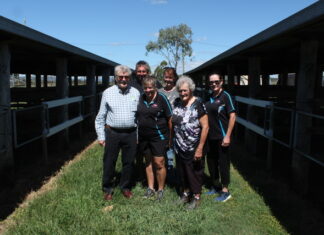The incidence of dementia is expected to increase 269 per cent in the Northern Tablelands by 2050.
Member for Northern Tablelands Richard Torbay said the figures released at a Parliamentary Friends of Dementia meeting in Parliament House were alarming.
“It’s a wake-up call to allocate more resources for people with dementia and their carers,” he said.
“This dreadful disease is already the single greatest cause of disability in people over 65 and is the third leading cause of death after heart disease and stroke.”
The figures show the Northern Tablelands is now ranked 33rd of the 93 electorates in NSW, with 1124 people diagnosed.This is predicted to rise to 3060 by 2050.
“Dementia is one of the biggest health challenges we face,” Mr Torbay said.
“We are fortunate in our area that we do have some excellent support measures in place, including the Memory Assessment Program.
“At today’s meeting, we heard some heart rending stories from people and their families coping with dementia and managing the inevitable deterioration that often leads to institutional care.”
Currently New England Medicare Local staff facilitate regular carer support meetings in Armidale and travel and also speak with community groups across the Northern Tablelands on Dementia and Risk Reduction.
Dementia Education and Carer Support Program Manager Sally Henry and Clinical Coordinator of the Memory Assessment and Patient Support Services, Cate Doyle, also meet and consult with individual clients in Armidale, Guyra, Glen Innes, Inverell, Tenterfield and Uralla
Projections presented at the Parliament House meeting show that, by the 2060s, national spending on dementia will reach $83 billion, outstripping that of any other health condition.
It will represent around 11 per cent of the entire health and residential aged care sector spending.
Alzheimer’s disease is the most common form of dementia, accounting for between 50-70 per cent of all cases. Dementia is more common after the age of 65, but can also occur in people in their 40s and 50s.
Get the latest news to your email inbox FREE!
REGISTER





